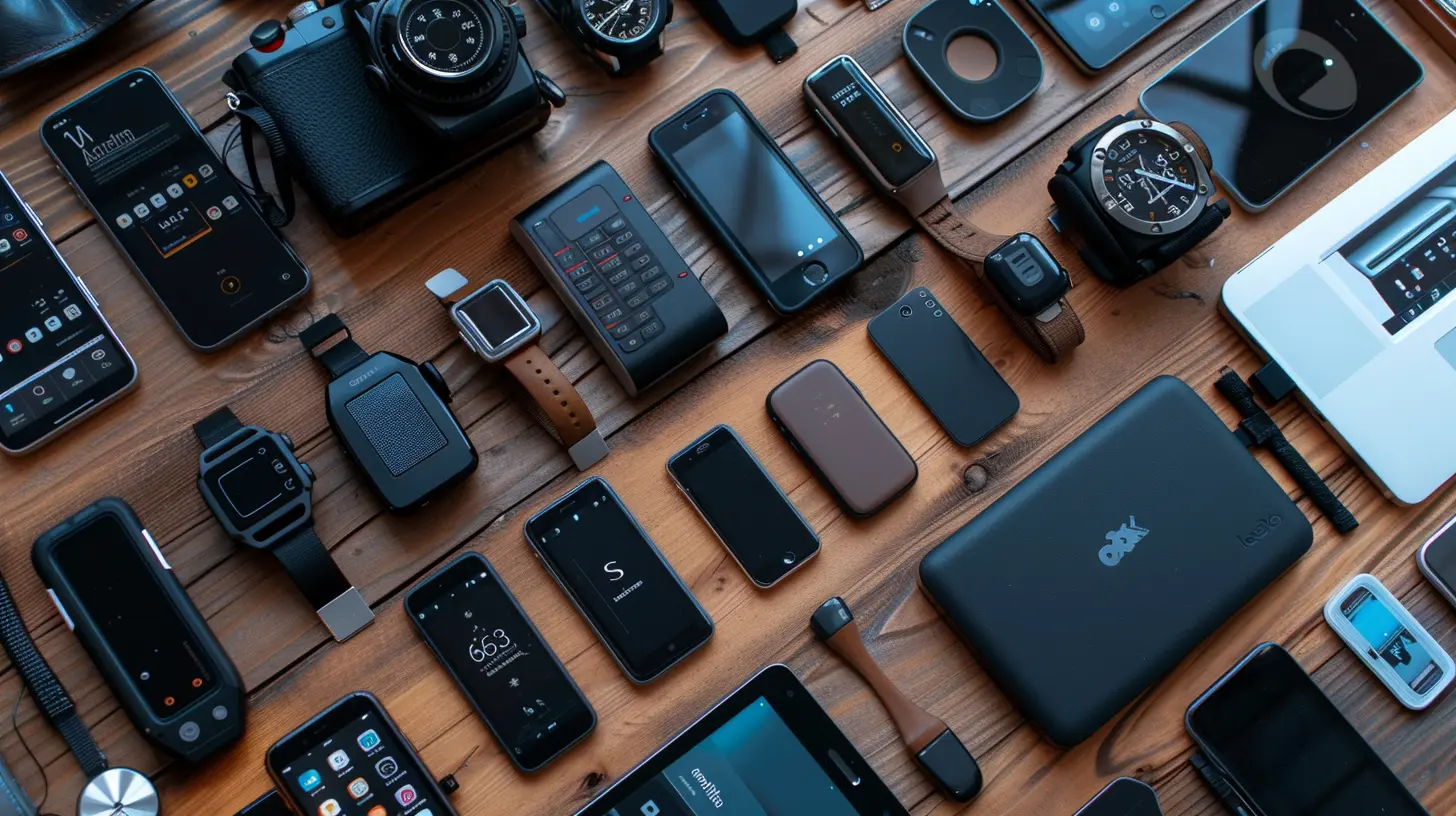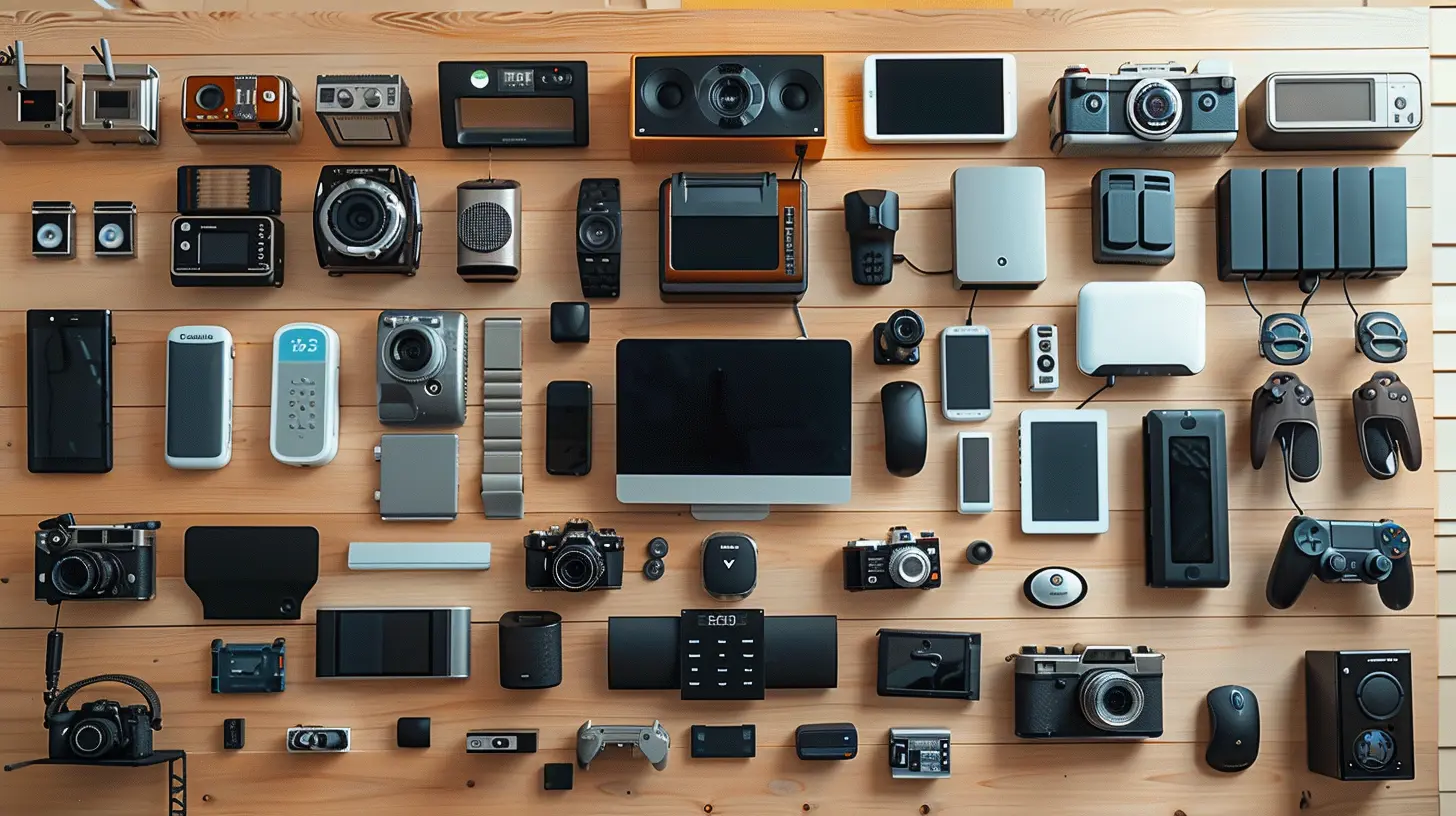Smart Devices, Dumb Security: Vulnerabilities in IoT
16 August 2025
Imagine you’ve just bought a brand-new smart refrigerator. It tells you when your milk is low, helps you plan meals, and even streams music. Pretty cool, right? But what if I told you that same fridge could be a backdoor for hackers to sneak into your home network? Yep, it sounds wild—but that’s today’s reality.
Welcome to the wonderfully convenient yet shockingly vulnerable world of the Internet of Things (IoT). The phrase might sound fancy, but it simply refers to all those "smart" devices we now use in our daily lives—smart speakers, thermostats, baby monitors, light bulbs, doorbells, and even coffee makers.
As awesome as these gadgets are, they come with a massive caveat: most of them are pretty terrible at keeping themselves—and your personal data—secure. Let’s unpack why that is, what can go disastrously wrong, and what you (yes, you!) can do to stay safe in this connected world.
What Exactly Are IoT Devices?
Before we dive into the ugly stuff, let’s clear up what we’re talking about.IoT (Internet of Things) devices are everyday items that connect to the internet. They gather data, talk to other devices, and often make your life easier by automating routines or providing you with extra functionality.
Some common examples include:
- Smart TVs
- Fitness trackers
- Smart thermostats (like Nest)
- Security cameras and smart doorbells
- Smart locks
- Connected kitchen appliances
They're everywhere—and they're multiplying like rabbits.
The Problem: Smart Devices, Dumb Security
Here’s the kicker: many IoT devices are created with a “features-first” mindset. Manufacturers are in a race to wow consumers and flood the market with whiz-bang tech. What usually gets shoved to the backburner? You guessed it—security.And unfortunately, most of these devices lack basic cybersecurity protections. Some don’t encrypt your data, others rely on weak default passwords, and many rarely (if ever) receive software updates.
It’s like building a high-rise with no fire exits—everything looks great until something goes terribly wrong.
Why IoT Devices Are Prime Hacker Targets
Let’s be honest, hackers are opportunists. And IoT devices are a gold mine of opportunities.Here’s why they love going after connected gadgets:
1. Weak or Default Passwords
Most smart gadgets come with pre-set usernames and passwords like “admin/admin.” Shockingly, lots of folks never change them. That’s like putting a lock on your front door with the key taped to it.2. Lack of Regular Updates
Unlike your smartphone or PC, IoT devices don’t usually get consistent firmware updates. This means known vulnerabilities may never be fixed, creating a window of opportunity for attackers indefinitely.3. Minimal Processing Power
Many IoT devices are made to be low-cost, so they lack the processing power to handle strong security protocols. It’s like trying to run a high-end antivirus on a pocket calculator—it just doesn’t work.4. Always-On Connectivity
These gadgets stay online 24/7, quietly (and sometimes noisily) chatting with the internet. This makes them easy targets for hackers scanning for open ports and weak links.
Real-World Examples That’ll Make You Think Twice
This isn’t just “what if” stuff—it’s already happening. Let’s look at a few jaw-dropping real-world examples.1. Mirai Botnet Attack
In 2016, the Mirai malware turned thousands of poorly secured IoT devices into a massive botnet army. These hijacked devices launched one of the largest DDoS (Distributed Denial of Service) attacks ever recorded, taking down major websites like Twitter, Netflix, and Reddit. The twist? Most of the devices were everyday things like routers and security cameras using default credentials.2. Las Vegas Casino Heist via a Thermometer
In an almost comic book-style hack, attackers infiltrated a Las Vegas casino’s internal network through—you guessed it—a smart aquarium thermometer. They used it as a foothold to access sensitive data. Yep, a fish tank thermometer was the casino’s Achilles heel.3. Baby Monitors Turned Creepy
There have been multiple reports of internet-connected baby monitors being hacked. In some cases, strangers have spoken to babies in their cribs or used the camera to spy on families. If that doesn’t send chills down your spine, nothing will.What’s at Risk?
You might be wondering: “So what if someone hacks my smart light bulb? It’s just a light, right?”Fair point, but here’s the thing—once a hacker gets into any device on your network, they can often pivot to more sensitive areas. It’s like slipping in through the bathroom window and then unlocking the front door from the inside.
Here’s what you’re potentially risking:
- Personal identity theft
- Banking and financial info leaks
- Loss of control over home security systems
- Spying and physical safety threats
- Being part of a botnet involved in illegal activity
Yikes.
How Can We Fix This Mess?
Thankfully, all is not lost. While the current state of IoT security is a bit of a dumpster fire, there are things we can all do—both as consumers and industry leaders—to clean it up.For You, the End User
Let’s start with what you can control:1. Change Default Passwords Immediately
Seriously, do this the minute you set up a new device. Use strong, unique passwords and consider using a password manager to keep track.2. Regularly Update Your Devices
Check if your smart devices have firmware updates available. Apply them whenever possible. Some devices even allow auto-updating—enable that if it’s offered.3. Segment Your Network
Use a separate Wi-Fi network for your IoT devices. Most routers allow you to set up a “guest network” which can be isolated from your main one. This way, if your smart toaster gets hacked, it won’t lead attackers straight to your personal files.4. Disable Unused Features
If your device has functionalities you don’t use—like remote access, voice commands, or Bluetooth—turn them off. Fewer features = fewer ways in.5. Be Picky When You Buy
Not all smart gadgets are created equal. Look for devices from reputable brands that emphasize security and transparency. Read reviews and see if they receive regular updates.Industry’s Job: Build It Better
Of course, we can’t shoulder all the blame. Device makers have a responsibility, too. Here’s what needs to change:- Security by design, not as an afterthought
- Mandatory encryption for all data in transit and storage
- Regular, automatic updates for firmware and software
- Secure authentication methods (no more "admin/admin")
- Greater transparency around data collection and usage
Governments and regulators can also step in by enforcing minimum security standards. Some progress has been made in places like California, where laws now ban default passwords on connected devices. But the world has a long way to go.
The Future of IoT Security: Is There Hope?
Yes, absolutely. Awareness is the first step, and more people are waking up to the risks of smart tech. As consumers demand better safeguards, companies will (hopefully) follow suit. Also, the rise of technologies like blockchain for IoT security, AI-based threat detection, and zero trust architecture are promising signs.We're not doomed—but we do need to act now.
Final Thoughts: Stay Smart About Your Smart Devices
The promise of IoT is undeniably exciting. Who doesn't love a home that feels like it came out of a sci-fi movie?But as we invite more and more devices into our lives—and onto our networks—we need to take a step back and ask: “How secure is this?”
Because convenience is great, but not when it comes at the cost of your privacy, safety, or peace of mind.
So the next time you set up that shiny new gadget, think about security as much as you think about functionality. After all, a smart device shouldn't come with dumb risks.
all images in this post were generated using AI tools
Category:
Cyber ThreatsAuthor:

Kira Sanders
Discussion
rate this article
1 comments
Brick Cantu
This article highlights a critical issue in IoT security. As smart devices proliferate, addressing their vulnerabilities must be prioritized to protect user privacy and safety.
August 19, 2025 at 11:19 AM

Kira Sanders
Thank you for your insightful comment! You're absolutely right—prioritizing the security of smart devices is essential for safeguarding user privacy and safety as IoT continues to expand.


